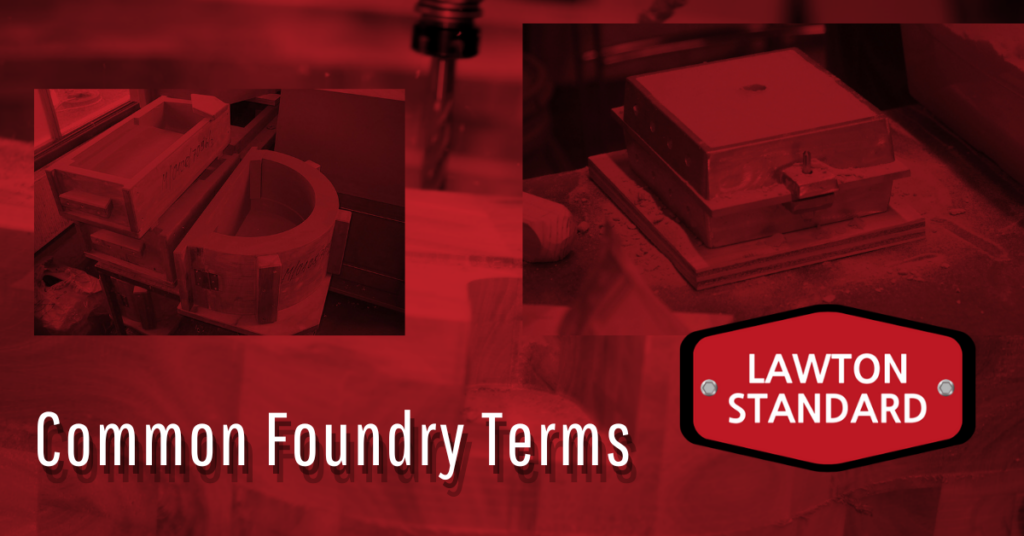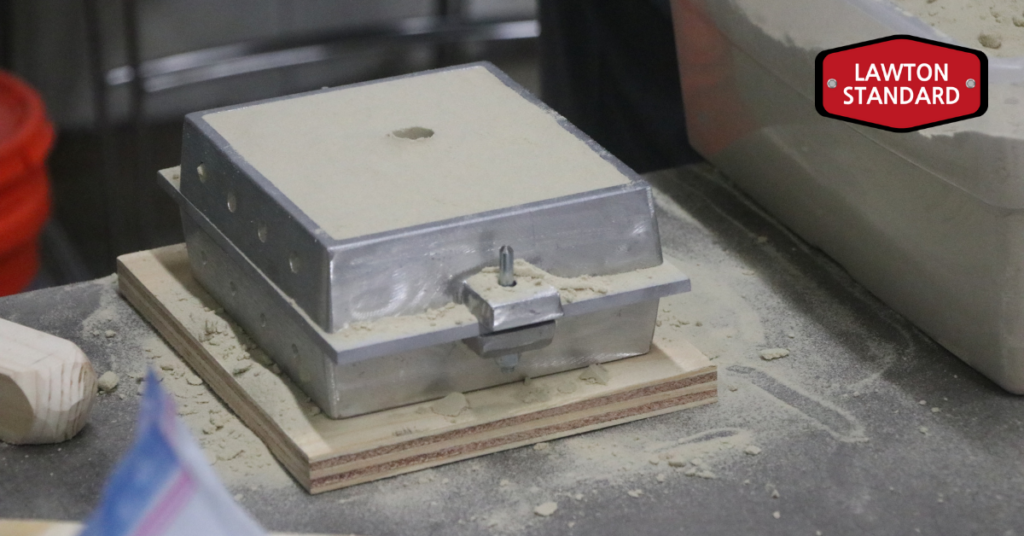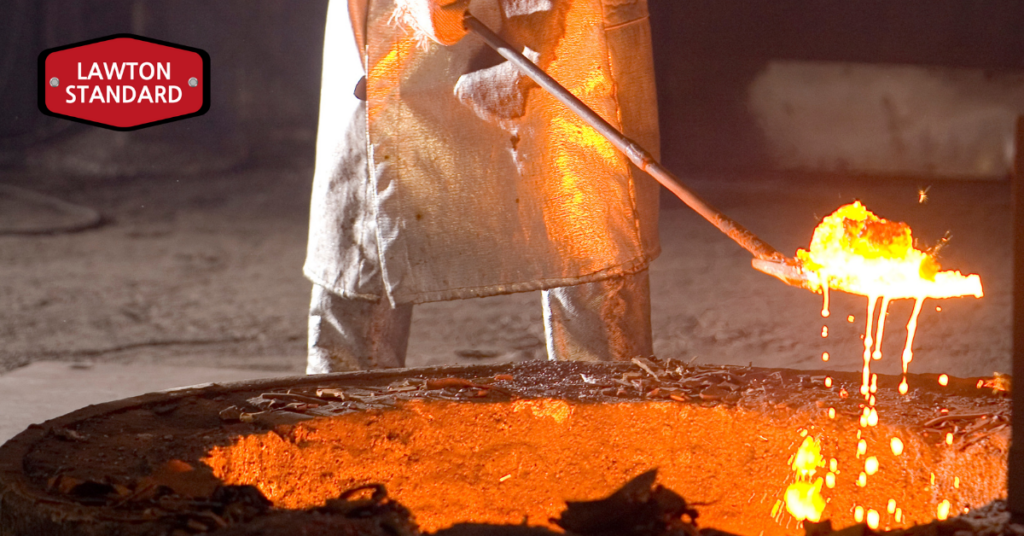
A simple list of commonly used terms in a foundry setting (in order of use):
Pattern – The wood, metal, foam or plastic shape used to form the cavity in the sand. A pattern may consist of one or many impressions and would normally be mounted on a board or plate complete with a runner system.

Corebox – The wooden, metal or plastic tool used to produce cores.

Mold – Normally consists of a top and bottom form, made of sand, metal or any other investment material. It contains the cavity into which molten metal is poured to produce a casting of definite shape.

Cope – The top half of a horizontally parted mold.
Drag – The bottom half of a horizontally parted mold.
Core – A sand or metal insert in a mold to shape the interior of the casting or that part of the casting that cannot be shaped by the pattern.

Runner/Gating – The set of channels in a mold through which molten metal is poured to fill the mold cavity. The system normally consists of a vertical section (downgate or sprue) to the point where it joins the mold cavity (gate) and leads from the mold cavity through vertical channels (risers or feeders)
Sprue – The channel, usually vertical, that the molten metal enters.
Riser/Feeder – A part of the gating system that forms the reservoir of molten metal necessary to compensate for losses due to shrinkage as the metal solidifies.
Chill – A metal insert in the sand mold used to produce local chilling and equalize rate of solidification throughout the casting.
Charge – A given weight of metal introduced into the furnace.
Ladle – A container used to transfer molten metal from the furnace to the mold.

Heat – A single furnace charge of metal.
Shakeout – The process of separating the solidified casting from the mold material.
